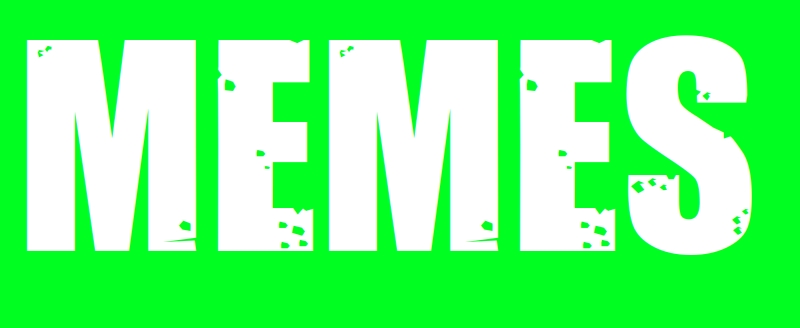Celsius is the only SI unit I don’t like. I get that it’s more objective than Fahrenheit, but it has worse vibes and isn’t pleasant because it’s the worst of both worlds between the actual objectivity of Kelvin and the humanism of Fahrenheit.
the humanism of Fahrenheit.
How? Fahrenheit scale is totally incomprehensible. Celsius at least is using a rational point for 0 (=where water freezes) and same scale as Kelvin.
Do you not understand humanism in context, or are you just under the impression that the Fahrenheit scale was invented arbitrarily and with no particular meaning in mind? Obviously it was not, and even calling it “totally incomprehensible” belies the folly of believing that people in the past were less intelligent. The Fahrenheit scale was an evolution of earlier scientific work, the Rømer scale, and it was intended to make sense for applications needed at the time; it wouldn’t have been developed at all otherwise.
The placement of 0° for Fahrenheit makes perfect sense from the perspective of the limitations of contemporary technology: the scale has to start somewhere, after all, and it has to be reproducible. Scientists had already tried working backwards from the boiling point of water or other materials and it didn’t produce consistent, reproducible results due to the endless trouble caused by atmospheric pressure, altitude, and so on. The freezing point of water was also not consistent enough. That sounds like unnecessary quibbling from people who also commonly thought alchemy was real, but the fact is that scientific needs had already evolved past the point where a temperature scale could have variable criteria; Rømer was actually motivated to develop a reproducible temperature scale for the specific purpose of measuring, and correcting for, thermal expansion of tools when making astronomical measurements.
Keep in mind that scientists were limited by 17th-century technology, so the best method available to them to establish a consistent and reproducible temperature was to use a eutectic system, because it stabilizes its own temperature more independently of its outside environment, and a eutectic system of ammonium chloride brine was the coldest one they had access to. Therefore, the melting point of ammonium chloride brine was the 0° of many systems, including being 0°Rø. Like most decent scientists of his day, Ole Rømer recognized the inherent superiority of sexagesimal, and set the boiling point of water at 60°Rø. Also like the majority of scientists, Rømer considered it most useful for practical applications to establish multiple points of explicit secondary definition for his temperature scale, explicitly stating the freezing point of water is exactly 7½° and the internal temperature of the human body is 22½°.
Daniel Gabriel Fahrenheit, who was strongly influenced by (and in some ways a protégé of) Ole Rømer, wanted to develop a derivative system and improve on it because of the widespread demand for accurate thermometers, and he also developed the first practical mercury thermometer. What he settled on was to start at 0°Rø but multiply everything by 4, because it would make calculations much easier, and because it would make the scale easier to interpret than using fractions (temperatures were usually given in terms like 13⅔° at the time, not decimals). That would put the freezing point of water at 30°, the internal temperature of the human body at 90°, and the boiling point of water—which Fahrenheit wasn’t quite as concerned about, because it was outside the scope of what he wanted to accomplish with thermometers—at 240°F. Fahrenheit wanted these numbers to be easier to work with, however, so he then adjusted the scale so that the freezing point of water would be 32, also putting the approximate measurement of human body temperature at 96. This gives you a temperatere scale with lots of whole numbers to work with, where the important “yardstick” numbers the factors of 2, 4, 8, and 16. What’s more, because the primary reference points for the scale line up with multiple aspects of the environment that humans have evolved to survive, this meant that people who encountered the Fahrenheit scale at the time it was developed lived in an environment where it’s likely to get near but not typically below 0°F on a winter night, and near but not usually above 100°F on a summer day. Considering that, and considering it was easy to do arithmetic with Fahrenheit, and considering further that Fahrenheit’s mercury thermometers also literally worked better than anyone else’s at the time, it’s not hard to see why it managed to get such a deep foothold on regular people by the time better scales based on more accurate and sophisticed calibration arose. As better methods arose for controlling for the variability of water’s freezing point, the scientific community’s need for Fahrenheit diminished, but it was still popular.
Note on the boiling point: the Fahrenheit scale was adjusted by the Royal Society decades after his death to drop the boiling point of water to exactly 212°, for the sole purpose of making the boiling and freezing points of water exactly 180° apart for calculation purposes. That’s why the approximate human body temperature in Fahrenheit is now 98.6°F instead of 96°F. This also means the eutectic system of ammonium chloride brine is no longer 0°F but is near 4°F, which is a fascinating insight into the evolving needs of science.
That’s what I mean by humanism. Fahrenheit was a scale designed to be reproducible as possible, in a way that was agnostic as possible of environmental factors with simple technology, using numbers that were easy to calculate, which in turn made sense to ordinary people and corresponded largely with the experiences of their daily lives.
It is not an attack on scientific principles nor on non-American cultures to describe Fahrenheit as a humanistic system, it is the accurate use of a term. The connotations you get from that are the ones you bring with you.
100F was originally set to roughly human body temperature. 0 was the freezing point of a brine mixture (water, salt, and ammonium) meant to be similar to sea water. It was used because the temperature would self-stabilize at a particular temperature, which was defined as 0 degrees.
That’s why its “humanistic,” the scale roughly includes the temperature range we can survive in, and provides decent granularity within that range. Metric based everything on pure water, which is pretty arbitrary also, as evidenced by both scales being redefined as more precise and repeatable means of defining measured units have become available.
Ah yes the salt and ammonia brine, how human.
You’re one of today’s lucky 10,000, and yours is the eutectic system. Read my other comment if you don’t feel like looking into it.
There are very few places that experience -17C and 40C for that to be really useful. And I don’t get it at all. 0 is cold, 30 is hot. Not a difficult concept.
Intuition is entirely based on familiarity.
It isn’t just about intuition as randomly judged by how you or anyone else feels about it. Humans do a lot of things on 0 to 100 and 0 to 10 scales. Literally the basis of the metric system. But all measurements are arbitrary comparisons to some target object: “the meter”.
So a temperature scale that closely aligns the 0 to 100 scale to the minimum and maximum commonly experienced surface temperature of the planet we live on is going to feel more natural to use than one which aligns to the boiling point of water, something we don’t usually encounter in nature.
Now we do encounter boiling liquids, and hotter, in labs and in kitchens, which is why C probably feels natural to scientists and people who cook a lot.
But the resolution of it isn’t particularly intuitive. What does 1\100th of the aggregate temperature of boiling water have to do with anything? Why a linear scale? It takes more energy to add 1°C of heat to an ice cube than to the equivalent amount of 20°C (“room temperature”) water.
Measurements are about both precision and repeatability, but also about conveying information in an easily understandable way. Sometimes those goals conflict, particularly when a scale of measurement is used in both informal and formal settings.
Subjectively? I only really think there are like six temperatures. Fucking hot, hot, warm, cool, cold, fucking cold. My clothing choices change at each stage of that scale.
Just because F encapsulates that in a positive integer 1-100 scale doesn’t really make it appeal to me. C feels much more natural, more human, because you’re not dealing with ludicrously small increments that don’t matter for day to day use, and the 0-30 captures almost all temperatures you’re going to actually see day to day.
It irks me that people are trying to turn their personal prejudices and habits into like, objective universal laws.
Farenheit is set up such that temperatures between 0 and 100 convey the subjective feel. 0F is really cold, 100F is really hot. Obviously cold and hot feel is subjective, but what could be more human than subjectivity?
One quibble - it fully ignores humidity, as does C. The subjective feel of a climate doesn’t depend only on temperature. 50% humidity at 10C is very different from 50% at 40C.
And celsius fully ignores the effect pressure has on the boiling/melting point of water. Turns out temperature units only measure temperature






